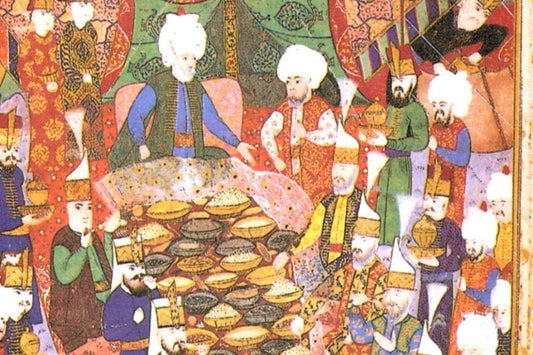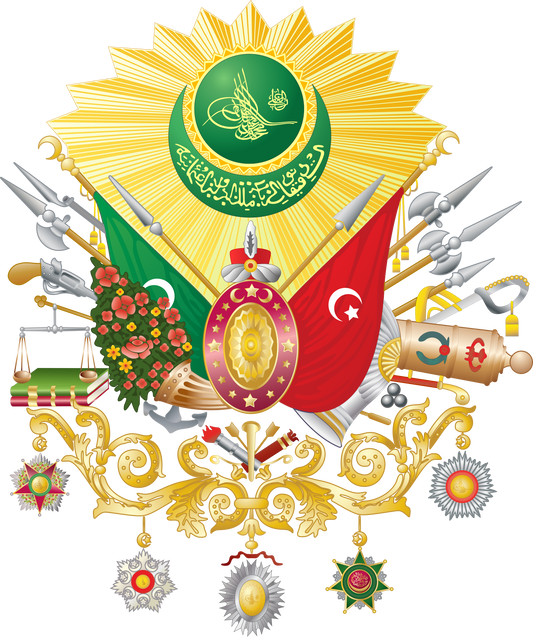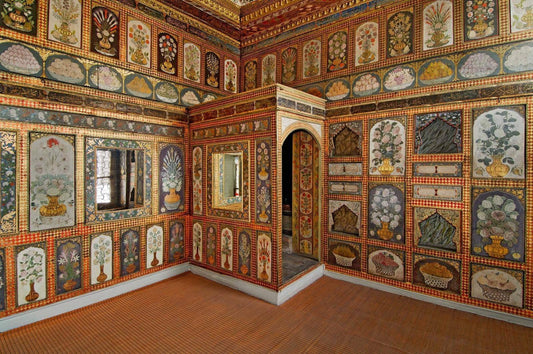Tile and ceramic art has followed a long evolutionary path in Anatolia. Tile plaques adorning the walls of buildings during the Seljuk, Beylik, and Ottoman periods are notable for their diversity of techniques and patterns. The surviving Anatolian Seljuk-era ceramics are quite limited. However, examples became abundant from the 15th century onward, becoming popular pieces in both domestic and international museums and private collections.
In the buildings of the Principality Period dated to the 14th-15th centuries, tile decorations are not encountered very often. It is noteworthy that in these few examples, the tradition of the Anatolian Seljuk Period continued without much change. It is seen that glazed bricks were also used in addition to tile material in the minarets of Birgi Ulu Mosque (1312), Manisa Ulu Mosque (1366-67) and İznik Yeşil Mosque (1391-92). The tile mosaic technique, which was used quite frequently in the Anatolian Seljuk Period, was not much popular in the Principality and Early Ottoman periods. In addition to blue, turquoise, purple and black, white was also used in the tile mosaic decorations of this period, arranged in larger compositions compared to those of the Seljuk period. The tile mosaic decorations seen on the mihrab of Birgi Ulu Mosque (1312) and the transitional elements of the dome in front of the mihrab of the Seljuk İsa Bey Mosque (1375), are from the Principality Period; The Green Mosque of Iznik (139-92), the Green Mosque, Green Madrasa and Green Tomb of Bursa, and those in the Muradiye Mosque of Bursa (1426) are rare examples of the Early Ottoman Period.
The decline in the use of tiles during the Principalities Period did not prevent the emergence of new techniques in the 15th century. The "colored glaze technique," which we first encountered during this period, is not seen in Anatolian ceramic art. This technique was applied only to tiles. Tiles created with colored glaze, particularly seen in buildings in Bursa, Edirne, and Istanbul, employed a wide variety of colors, including blue, turquoise, ultramarine, black, white, yellow, gilding, lavender, and pistachio green. Early examples of this style can be found in the Bursa Green Mosque, Green Tomb, and Green Madrasa, as well as the Edirne Muradiye Mosque (1426).
Konya, the center of tile production during the Anatolian Seljuk period, began to lose its importance from the 15th century onward, while İznik and Kütahya became new centers of tile and ceramic art. İznik, where the highest quality ceramics of the early Ottoman period were produced, attracted attention as a significant settlement from the 4th century BC onward. Its location on the road connecting Istanbul to Anatolia allowed the city to remain economically and culturally vibrant. According to travellers, around 300 tile masters worked in İznik. While this may seem exaggerated for such a small city, the number of kilns uncovered in recent excavations and research confirms this account.
Ceramics produced using the underglaze technique, known as the "Miletus type," hold a significant place among 14th-15th century ceramics. These red-paste ceramics, so named because they were believed to have been produced in Miletus until recently, have now been determined to have been produced in Iznik. The ceramics in this group, which feature cobalt blue, dark purple, and turquoise, also feature floral and geometric decorations. For example, compositions consisting of fan-shaped leaves drawn with fine brushstrokes, originating from a central rosette, are frequently encountered.
The so-called "blue-and-white" ceramics that emerged after the Miletus-style ceramics were higher-quality products, closer to porcelain. These ceramics were the second innovation to emerge during the Ottoman period, following the colored glaze technique. This underglaze technique, rarely seen in tiles, is frequently encountered in domestic ceramics. This group of tiles and ceramics, produced in Iznik and seen until the early 16th century, featured blue, turquoise, and ultramarine colors on a white background. These tiles and ceramics, reminiscent of 15th-century Far Eastern Ming porcelain, feature peonies, flowers, Chinese clouds, and dragons as popular motifs ("Early Ottoman Art, The Heritage of the Principalities," pp. 140-141).



